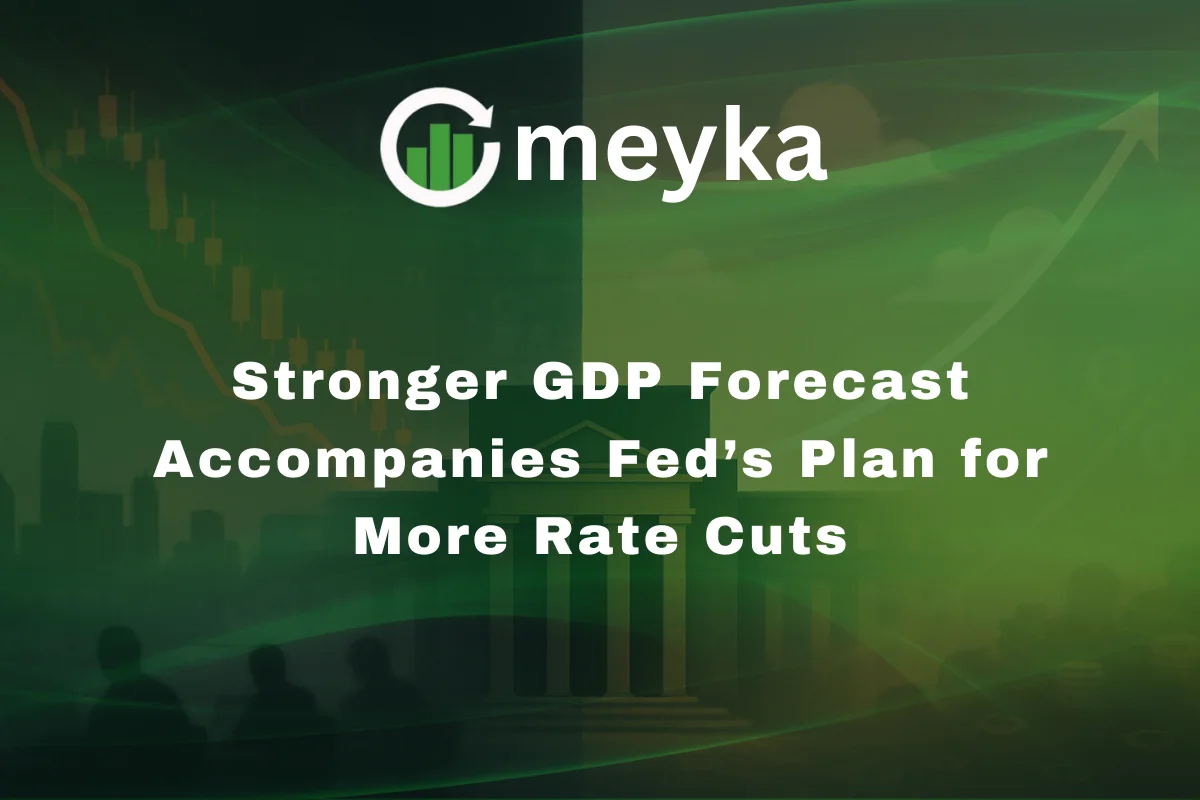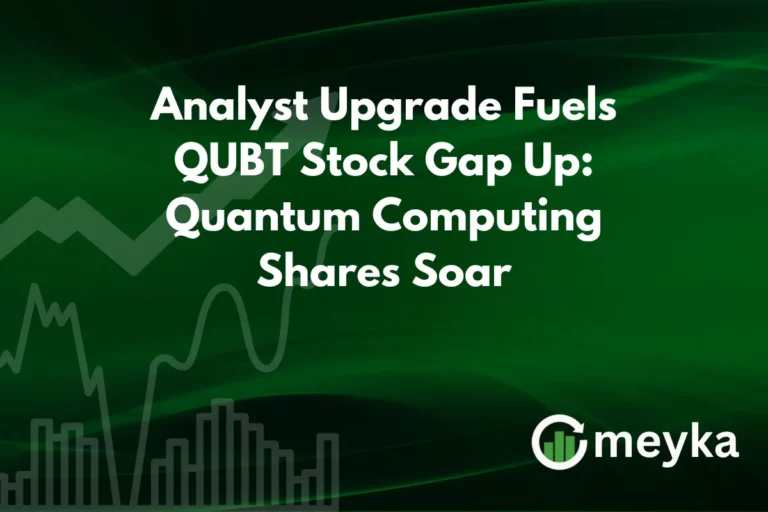Stronger GDP Forecast Accompanies Fed’s Plan for More Rate Cuts
The Federal Reserve has updated its view of the U.S. economy. Alongside its latest rate decision, it lifted its GDP forecast for 2025. At the same time, it signaled plans for two additional cuts before the end of the year. These moves have major implications for growth, markets, and investors.
The Fed’s Latest Policy Shift
The Fed recently lowered rates by a quarter point. This was the first reduction of 2025 and came after months of keeping borrowing costs high to fight inflation.
Officials also released their updated “dot plot,” showing that two more cuts are expected this year. If delivered, the benchmark interest rate could fall into the range of 3.5% to 3.75% by December.
This decision reflects a delicate balance. Growth has slowed, and the labor market is softer, but inflation is no longer the only concern. Policymakers now see space to support the economy without giving up the progress made against rising prices.
Why the GDP Forecast Matters
Alongside this policy change, the Fed raised its outlook for economic growth. The stronger GDP forecast means officials believe the U.S. economy will perform better than expected earlier in the year.
This is not a massive change, but it is an important one. Growth projections guide investors, businesses, and consumers. A stronger outlook reassures markets that the slowdown will likely be modest, not severe.
It also gives the Fed more room to act. If the economy is resilient, interest rate cuts become less risky. This allows monetary policy to shift from defensive to supportive.
Economic Signals Behind the Forecast
Several factors explain why the GDP forecast improved. Consumer spending has held up, even as borrowing costs remained high. Businesses have continued to invest in expansion, particularly in technology and automation.
The labor market, while weaker than last year, is still producing jobs. Wages have not collapsed, which supports household demand. Inflation has also eased enough to create breathing room for monetary easing.
Together, these trends show that the economy is slowing, but not collapsing. That is the foundation for a stronger outlook.
How Rate Cuts Support Growth
Interest rate cuts reduce the cost of borrowing. Families can refinance mortgages at lower rates. Companies can finance new projects more cheaply. Students can borrow for education with fewer long-term costs.
All of this activity feeds into GDP. More investment and more consumer spending create a positive cycle of growth.
The Fed’s signal of two more cuts suggests it wants to secure this cycle. By acting early, it hopes to avoid a deeper slowdown.
Market Reaction to Fed Guidance
The stock market pays close attention to Fed decisions. Lower rates are often seen as a positive for equities, especially in growth-oriented sectors.
Technology companies, including those focused on AI stocks, stand out. Their business models depend heavily on investment in research, computing infrastructure, and global expansion. Cheaper credit gives them a boost.
At the same time, other industries may feel mixed effects. Banks and lenders could face pressure as margins shrink. Fixed-income investments may lose some appeal as yields decline.
Overall, though, the message from markets has been clear: lower rates combined with stronger growth expectations are good news for risk assets.
Risks That Remain
Despite optimism, several risks could disrupt this outlook. Inflation could return, forcing the Fed to slow or even reverse its cuts. A faster rise in unemployment could weigh on household spending.
Global risks remain significant as well. Supply chain problems, geopolitical tensions, or weaker global demand could all drag on U.S. growth.
Finally, timing matters. If the Fed cuts too quickly, it could reignite inflation. If it waits too long, the slowdown could deepen. That delicate balance is not guaranteed.
Implications for Investors
For investors, the stronger GDP forecast is both a signal of opportunity and a reminder of risk. Growth-sensitive sectors should see renewed support. Technology and AI are particularly well-positioned.
Investors conducting stock research should keep an eye on earnings guidance, hiring plans, and capital expenditure trends. These factors will show how companies are responding to the new rate environment.
Diversification remains important. While growth sectors may benefit, defensive assets like healthcare, utilities, and consumer staples can provide protection if conditions change.
The Bigger Picture
The Fed’s decision to raise its GDP forecast while signaling more cuts reflects confidence in the economy’s resilience. It also shows a willingness to pivot policy to prevent a sharper slowdown.
For households, this may mean more stable job opportunities and some relief in borrowing costs. For businesses, it signals continued support for expansion. For markets, it creates room for optimism, though with caution attached.
This combination of stronger growth expectations and easier monetary policy is not common. It represents a chance for the economy to regain balance after years of inflation battles and uneven growth.
Conclusion
The Federal Reserve’s updated GDP forecast and its plan for two more rate cuts in 2025 mark a turning point. Growth is expected to be firmer, and borrowing costs are on track to ease further.
For the stock market, the implications are significant. Technology and AI stocks may lead gains, while other sectors adapt to the new environment. Risks remain, but the outlook is brighter than it was just a few months ago.
As always, investors should stay alert to changes in inflation, labor markets, and global conditions. The Fed may adjust its plans if the data shift again. But for now, the path ahead looks more stable, with growth expected to hold up as rates decline.
FAQs
The Fed lifted its forecast because consumer spending, corporate investment, and labor market resilience were stronger than expected. Inflation also eased, giving space for optimism.
Rate cuts reduce borrowing costs, making it easier for households and businesses to spend and invest. This additional activity supports GDP growth over time.
Growth-oriented sectors, especially technology and AI, benefit the most because they rely heavily on financing for innovation and expansion. Other cyclical industries also gain when demand rises.
Disclaimer:
This content is made for learning only. It is not meant to give financial advice. Always check the facts yourself. Financial decisions need detailed research.






